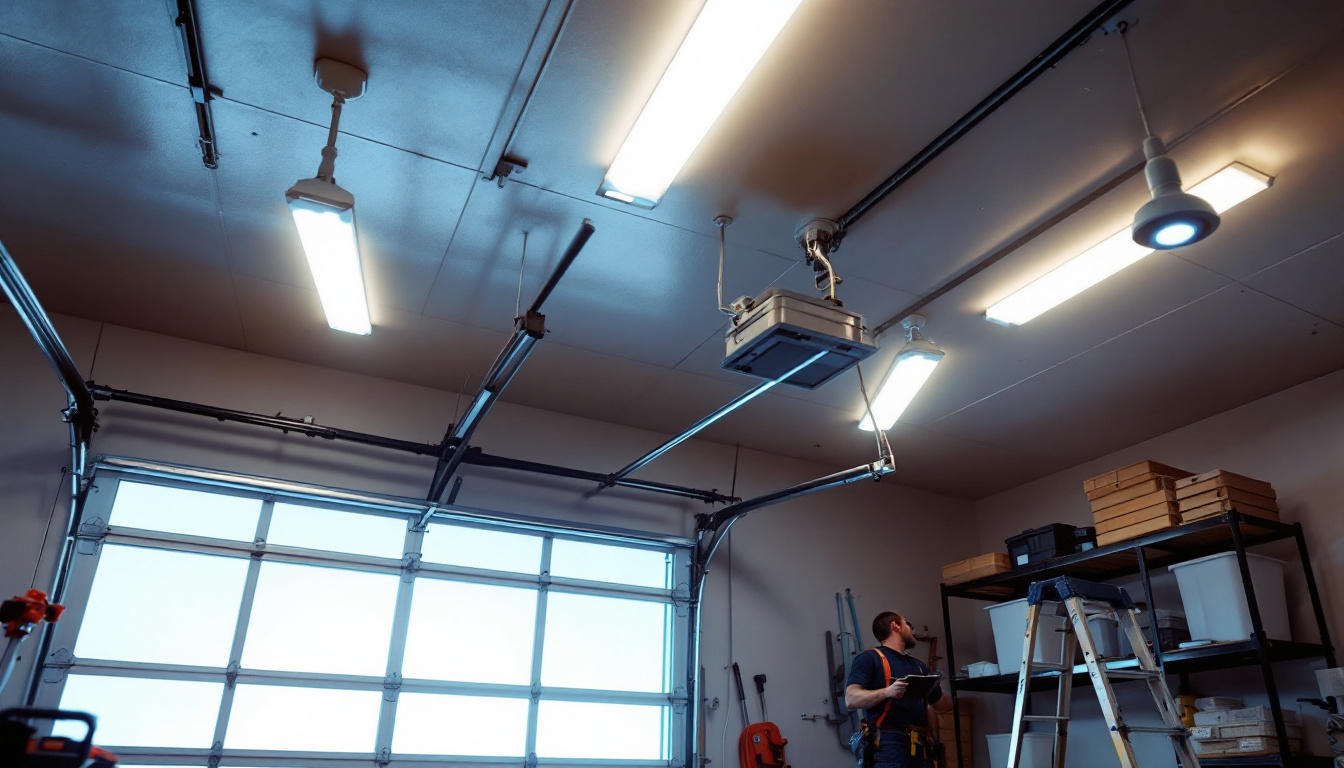Lighting plays a crucial role in both residential and commercial spaces, and understanding the brightness of lightbulbs is vital for lighting contractors. This knowledge not only enhances the quality of installations but also ensures customer satisfaction. This article delves into the significance of lightbulb brightness, the various types of bulbs available, and the essential tools that contractors need to effectively evaluate and implement lighting solutions.
Brightness is a fundamental characteristic of lightbulbs that directly affects the ambiance and functionality of a space. Measured in lumens, this metric quantifies the amount of light emitted by a bulb. The higher the lumen count, the brighter the light. For contractors, understanding how to select the appropriate brightness for different applications is essential.
Traditionally, many people relied on wattage to gauge brightness. However, with the advent of energy-efficient lighting technologies, such as LEDs, this method has become outdated. Wattage measures energy consumption, not light output. Therefore, lumens have become the standard for determining brightness. For instance, a 60-watt incandescent bulb produces approximately 800 lumens, while an LED bulb can achieve the same brightness using only 10-12 watts.
For lighting contractors, knowing the lumen output is crucial when designing lighting plans. Whether illuminating a cozy living room or a large commercial space, selecting bulbs with the right lumen output ensures that the area is adequately lit without wasting energy. Furthermore, understanding the color temperature, measured in Kelvins, can enhance the effectiveness of lighting design. Warmer light (around 2700K) creates a welcoming atmosphere, ideal for homes, while cooler light (5000K and above) is often preferred in workspaces for its clarity and focus-enhancing properties.
Several factors come into play when determining the appropriate brightness for a given space. The size of the area, the color of the walls, and the purpose of the lighting all contribute to the decision-making process. For example, a brightly colored room may require fewer lumens to achieve the desired brightness compared to a darker room.
Additionally, the task at hand can influence brightness requirements. Areas designated for reading or intricate work may need brighter light, while spaces meant for relaxation can benefit from softer, dimmer lighting. Understanding these nuances allows contractors to tailor their lighting solutions to meet specific client needs. Moreover, the placement of light fixtures plays a crucial role in achieving the desired brightness. Properly positioning lights can reduce shadows and enhance the overall illumination of a space, making it not only more functional but also aesthetically pleasing. This strategic approach to lighting design can transform an ordinary room into a vibrant, inviting environment, showcasing the importance of thoughtful planning in lighting projects.
Lighting contractors have a variety of lightbulb types at their disposal, each with unique characteristics and brightness levels. Familiarity with these options enables contractors to make informed recommendations based on individual project requirements.
Incandescent bulbs have long been a staple in residential lighting. They typically emit a warm, inviting glow and are available in various wattages, which translates to different lumen outputs. However, they are less energy-efficient compared to modern alternatives, and their brightness can diminish over time.
While incandescent bulbs are being phased out in many regions due to energy regulations, they still find use in specific applications where warmth and color rendering are prioritized. Contractors should consider the trade-offs between brightness, energy consumption, and longevity when recommending these bulbs. For instance, in settings such as dining rooms or living spaces where ambiance is crucial, the soft light of incandescent bulbs can create a cozy atmosphere that is often preferred over harsher lighting options.
Light Emitting Diodes (LEDs) have revolutionized the lighting industry. Known for their energy efficiency and long lifespan, LED bulbs produce significantly more lumens per watt than incandescent bulbs. This means that contractors can achieve the desired brightness while minimizing energy costs.
LEDs are available in a wide range of color temperatures, from warm white to cool daylight. This versatility allows contractors to create various atmospheres, making them suitable for both residential and commercial applications. Understanding the specific lumen output and color temperature of LED bulbs is essential for effective installations. Additionally, many LED options now come with dimming capabilities, enabling users to adjust brightness levels according to their needs, which adds another layer of customization to lighting design.
Compact Fluorescent Lamps (CFLs) are another energy-efficient option that provides a decent lumen output while consuming less energy than incandescent bulbs. However, they have a slower warm-up time and may not be suitable for all applications. Contractors should weigh the pros and cons of CFLs, especially in spaces where immediate brightness is necessary.
Moreover, CFLs contain a small amount of mercury, which requires careful disposal to prevent environmental contamination. This aspect can be a consideration for eco-conscious clients who are looking for sustainable lighting solutions. Despite their limitations, CFLs can be an excellent choice for areas that benefit from longer usage times, such as hallways or outdoor fixtures, where the initial delay in brightness is less of a concern. Understanding the specific needs of each space can help contractors make the best choice for their clients, balancing efficiency with practicality.
To effectively assess and implement lighting solutions, contractors need a range of tools. These tools not only aid in measuring brightness but also enhance the overall efficiency of installations.
A lumen meter is an indispensable tool for lighting contractors. This device measures the intensity of light in a given area, providing accurate readings of lumens. By using a lumen meter, contractors can ensure that the brightness levels meet the specified requirements for different spaces.
When conducting installations, contractors can use lumen meters to verify that the selected bulbs provide the desired brightness. This is particularly useful in commercial settings where compliance with lighting standards is essential. With a lumen meter, contractors can make adjustments as necessary to achieve optimal lighting conditions.
Color temperature meters are another valuable tool for lighting contractors. These devices measure the color temperature of light, expressed in Kelvin (K). Understanding color temperature is crucial for creating the right atmosphere in a space. For instance, warmer temperatures (around 2700K-3000K) are ideal for residential settings, while cooler temperatures (4000K-5000K) are often preferred in commercial environments.
By utilizing color temperature meters, contractors can ensure that the lighting design aligns with the client’s vision and the intended use of the space. This attention to detail can significantly enhance the overall satisfaction of clients.
Light distribution tools, such as beam angle calculators, help contractors understand how light spreads in a given area. Different bulbs have varying beam angles, which affects how light is distributed across a space. For example, narrow beam angles are suitable for focused lighting, while wider angles are better for general illumination.
By using light distribution tools, contractors can design lighting layouts that effectively illuminate areas without creating harsh shadows or overly bright spots. This ensures a balanced and aesthetically pleasing lighting solution.
Implementing best practices during lighting installations is crucial for achieving optimal results. Contractors should consider several factors to ensure that their work meets industry standards and client expectations.
Before commencing any installation, thorough planning and design are essential. Contractors should assess the space, understand the client’s needs, and create a lighting plan that outlines the desired brightness levels, bulb types, and placement. This preliminary work sets the foundation for a successful installation.
Collaboration with clients is key during this phase. Engaging clients in discussions about their preferences and requirements helps ensure that the final outcome aligns with their vision. Additionally, contractors should stay informed about the latest lighting trends and technologies to offer innovative solutions.
Once the planning phase is complete, contractors must focus on proper installation techniques. This includes ensuring that fixtures are securely mounted, wiring is correctly connected, and bulbs are appropriately fitted. Attention to detail during installation can prevent issues down the line and enhance the longevity of the lighting system.
Moreover, contractors should adhere to local electrical codes and regulations. Compliance not only ensures safety but also protects contractors from potential liabilities. Regular training and staying updated on industry standards can help contractors maintain a high level of professionalism.
After completing the installation, conducting a post-evaluation is crucial. This involves using lumen meters to measure brightness levels and ensuring that the lighting meets the specified requirements. Additionally, contractors should assess the overall aesthetics and functionality of the lighting design.
Gathering feedback from clients during this phase can provide valuable insights. If adjustments are needed, contractors should be prepared to make changes to enhance the lighting experience. A commitment to client satisfaction can lead to repeat business and referrals.
Understanding the brightness of lightbulbs and the tools necessary for effective lighting installations is essential for lighting contractors. By focusing on lumens, familiarizing themselves with different bulb types, and utilizing essential tools, contractors can create lighting solutions that meet the diverse needs of their clients.
Moreover, adhering to best practices during planning, installation, and evaluation ensures that contractors deliver high-quality results. As the lighting industry continues to evolve, staying informed about new technologies and trends will empower contractors to remain competitive and provide exceptional service.
In a world where lighting significantly impacts both functionality and aesthetics, the role of lighting contractors is more important than ever. By mastering the intricacies of lightbulb brightness and utilizing the right tools, contractors can illuminate spaces effectively and create lasting impressions.
Ready to enhance your lighting projects with the brightest solutions and essential tools? Look no further than LumenWholesale, where we offer an extensive range of spec-grade lighting products at unbeatable wholesale prices. Say goodbye to inflated markups and hello to high-performance lighting that meets the highest industry standards. With free shipping on bulk orders, you can stock up on premium lighting without any hidden fees. Elevate your lighting installations today and experience the perfect blend of quality, affordability, and convenience. Visit LumenWholesale for Wholesale Lighting at the Best Value.

Discover the key benefits and considerations of using LED light bulbs for floodlights in this essential guide for lighting contractors.

Discover the ultimate guide for lighting professionals with our essential checklist for choosing the perfect light pendant.

Discover essential tips and expert strategies from Philips Advance to elevate your lighting contracting projects.

Discover how choosing the right garage ceiling light can streamline operations for lighting contractors, saving both time and money.